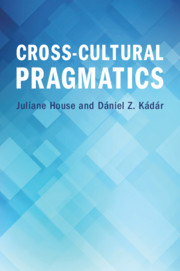Book contents
- Cross-Cultural Pragmatics
- Cross-Cultural Pragmatics
- Copyright page
- Contents
- Figures and Illustrations and Tables
- About the Authors
- Acknowledgements
- 1 Introduction
- Part I The Basics
- Part II Framework
- 6 Analytic Framework
- 7 Expressions
- 8 Speech Acts
- 9 Discourse
- Part III Applying the Framework
- Notes
- Glossary
- References
- Index
9 - Discourse
from Part II - Framework
Published online by Cambridge University Press: 17 September 2021
- Cross-Cultural Pragmatics
- Cross-Cultural Pragmatics
- Copyright page
- Contents
- Figures and Illustrations and Tables
- About the Authors
- Acknowledgements
- 1 Introduction
- Part I The Basics
- Part II Framework
- 6 Analytic Framework
- 7 Expressions
- 8 Speech Acts
- 9 Discourse
- Part III Applying the Framework
- Notes
- Glossary
- References
- Index
Summary
In Chapter 9 we examine discourse, the highest analytic unit. First, we argue that there is a major difference between the ways in which ‘discourse’ is investigated in cross-cultural pragmatics and some other fields such as Critical Discourse Analysis. To highlight differences between cross-cultural pragmatic research on discourse and Critical Discourse Analysis, we distinguish the term ‘cda’ from CDA, as an acronym from ‘contrastive discourse analysis’. We point out that discourse in cross-cultural pragmatics can be rigorously investigated through the logic of empirical research proposed by the philosopher Karl Popper. Following this, we examine various pragmatic units of analysis which are, at the same time, components of discourse itself, by arguing that discourse can only be approached rigorously across linguacultures if it is broken down into components, that is, if we systematise the units constituting data representing discourse. We also show how discourse as a departure point for analysis can be approached in cross-cultural pragmatics.
Keywords
- Type
- Chapter
- Information
- Cross-Cultural Pragmatics , pp. 134 - 158Publisher: Cambridge University PressPrint publication year: 2021

